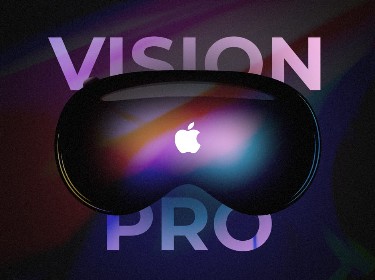With the banking industry transforming rapidly as it faces up to disruptive fintech companies, the integration of augmented reality (AR) is giving the financial services sector the tools it needs to enhance innovation and competitiveness.
Augmented reality in finance is entering a new era. According to recent research from the Digital Banking Report, 13% of bankers predict that a segment of consumers will incorporate AR for daily transactions by 2025, while 44% expect it to happen by 2030.
Since the global augmented reality market is estimated to grow to $88.4 billion by 2026, with a CAGR of 31.5% between 2021 and 2026, we can safely say that the business world is now sitting up and taking notice.
8 use cases for augmented reality in finance
![]()
AR is starting to make inroads into business technology in various ways. What’s more, cloud access can also provide AR to users without the constraints of hardware and allow businesses to link the data-crunching power of the computer with human judgment and expertise.
This trend is especially noticeable in the financial sector. With the market booming, implementing AR is the next logical step in transforming finance — particularly when you collaborate with an experienced financial software development company.
So let’s take a closer look at the top 8 use cases of AR in finance.
Data visualization
AR in financial data visualization enables a computer-generated 3D model to be superimposed onto a real-world environment in real-time.
Compared to traditional charts, graphs, presentations and spreadsheets, AR in finance makes it simple for users to spot key trends, anomalies, gaps and patterns that would otherwise be difficult to identify.
Additionally, AR data visualization is more user-friendly for understanding and analyzing financial information. Since modern AR accommodates networking features, investors can collaborate remotely using these advanced visualization techniques to make more accurate decisions even in situations involving multiple dimensions or attributes.
Salesforce is an example of a leading global company in the finance sector that has partially invested in AR-based data capture. Salesforce is building on its dominant position in sales to create a data analysis tool based on the relatively low-cost Oculus Rift headset. Since the computation occurs in the cloud, users need only the headset and their data. The result is an immersive 3D augmented environment that enables users to interact with data streams intuitively.
AR in financial data visualization not only enhances the user experience but also offers a significant edge for businesses looking to stay competitive. A data visualization consulting company can help organizations implement these advanced AR tools, providing the expertise needed to create custom solutions that drive better decision-making.
Check out VResorts — a platform for tour agents to showcase locations with the Oculus Go headset
Customer service
Integrating augmented reality in banking means that customers can enjoy more streamlined services. In nearly all cases, there is a cost-saving correlation to these changes.
For example, the National Bank of Oman uses AR to help customers locate nearby branches and ATMs. Offers and deals can also be found while browsing shopping malls in Omani streets, where customers use their smartphone cameras to bring their real-life surroundings together as an AR projection on their mobile screens.
Another example is Desjardins Bank, which released an augmented reality app called ‘Your Way Desjardins’. The app provides users with retirement planning information and tips. Instead of going into the bank to talk with a representative about retirement savings, users receive instructions from the app throughout the process.
Bank account management
Although customers can look at their account balances daily, they may need help understanding the value of their data. AR helps visualize information in 3D space and display objects to scale.
Westpac New Zealand is among the financial institutions embracing the implementation of augmented reality in banking. Its Westpac app allows customers to register relevant banking cards and check 3D bar charts that display balances, transaction history, and spend locations.
Online payments
As AR technology improves, traditional payment service providers continue to roll out service integrations that make processing orders more efficient and timely.
VISA Europe has been experimenting with AR and retail software development services that unlock the use of AR in finance for retail use.
The AR shopping and payment experience developed by VISA and Blippar allowed customers visiting the fashion brand House of Holland retail store to identify the product they wanted, select the right size, and purchase it simply by holding the smartphone in front of an item and tapping through.
Virtual trading
Augmented reality has also penetrated the trading sector, allowing traders to exchange experiences and hold meetings through AR-powered workstations.
Financial services are already considering bringing augmented reality into the trading room to help traders interact with complex data sets and collaborate remotely with clients.
Citigroup’s virtual trading desk with Microsoft HoloLens is a good example. It allows the user to set up a digital workstation that can be viewed in augmented reality. A number of virtual screens surrounding the user will show the performance of stocks and other assets and allow them to make decisions based on this information.
AR can also be used to visualize financial stock data. Users can create virtual charts displaying stock and financial data in real-time, making it simpler to understand complex indicators.
However, Citigroup’s virtual trading desk is for traders working within financial institutions, not consumer traders.
Virtual trading is a highly specialized application of AR in finance: a more consumer-focused application of AR may be the capacity to send money to others. For example, an application powered by smartphone facial recognition or by reading wallet codes.
PixelPlex has developed numerous platforms for the finance industry using cutting edge technologies. Learn more about them
Asset security
With the threat of cybercrime looming over every online transaction these days, financial institutions need protective measures to safeguard customer data privacy. This process often translates into highly encrypted firewalls and multifactor authentication to authorize account access. However, these security provisions can often prove ineffective and frustrating for customers.
To address this, some companies provide AR login procedures that use biometric scans of a customer’s face or irises to verify their identity securely.
With this in mind, Mastercard unveiled an augmented reality shopping experience incorporating Masterpass and Identity Check Mobile with iris authentication for safe and seamless payments.
AR biometrics can be a helpful tool in maintaining the international standards of the Payment Card Industry Data Security Standard (PCI DSS). The PCI DSS applies to branded credit cards and is intended to reduce credit card fraud. A trusted augmented reality development company would be of great help here.
Requirements for compliance with PCI standards include:
- Maintaining a secure network
- Protecting sensitive cardholder information
- Regulation of user access to the network and customer data
- Regular security audits
- Establishing a policy regarding information security
- Implementing a vulnerability management program
Axis Bank was the first Indian bank to use AR with Iris Scan to verify Aadhaar-based transactions through its micro ATM tablets.
Using the built-in ‘AR view’ function, which requires a customer to scan their iris on a tablet, the bank offers easier access to digital banking for consumers, especially in the rural parts of the country.
Communication
As communication can take place on a mobile phone or a computer, why should a financial institution continue to support a massive brick-and-mortar presence?
Tech-savvy millennials are the core of banking consumers and staff, and this core is diminishing. According to the Millennial Disruption Index, 73% of surveyed millennials are looking for new offers from Google, PayPal or Apple rather than from their local banks. In comparison, 33% say they won’t need a bank at all in the near future.
Financial institutions must embrace consumer-friendly AR to compete in the tech sector.
According to research, the top five areas that customers identified as leading to a positive experience are:
- Fast response to inquiries or complaints
- Simple purchasing process
- Tracking orders in real-time
- Clarity of product information across channels
- Ability to interact with the company through multiple channels
All the above come down to one attribute: agility. In the context of augmented reality in banking, agility means that the banks are flexible on a deep level and thus can maintain their nimbleness from one day to the next.
Staff training and education
AR can revolutionize the learning experience. A recent study conducted under the COVID-19 restrictions in Thailand confirmed the positive effects of augmented reality applications with respect to student engagement. The findings underline the good impressions made by AR applications to date, indicating that in this environment students can visualize the model and experiment with its qualities by wearing special headphones.
As for finance specifically, AR can transform how people interact with each other to acquire new knowledge on markets, trade and investment.
![]()
AR is also actively transforming manufacturing. Find out how
What does the future hold for AR in finance?
It’s equally crucial to make good use of the insights — and this is where PixelPlex developers come in. Anytime you need help with the AR integration process, we’ll be there to save you all manner of trouble. Be it custom or platform-based software, our team will elegantly fit it into a dedicated environment, from connected devices to sensors.
Our augmented reality development company harnesses simultaneous localization and mapping algorithms, marker and scene recognition, 3D projection overlays and realistic superimpositions to deliver bespoke software. We also prioritize top-notch UI/UX design in every project to ensure your application is intuitive and engaging for users.
Our team also has extensive experience in other advanced technologies, including blockchain, big data, AI, and metaverse development. All you need to do is reach out!




